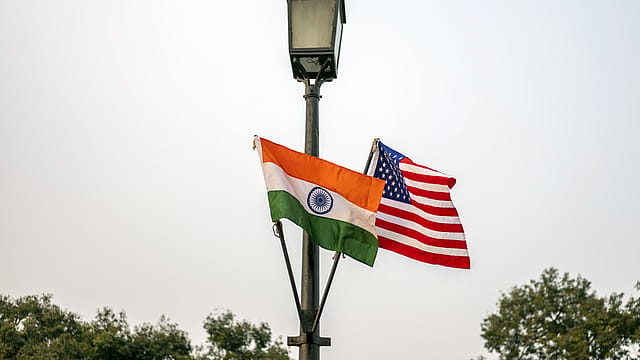How India will benefit out of U.S.-China tariff war
ADVERTISEMENT

The wide tariff gap created by the U.S. by levying 245% duty on Chinese goods while taxing imports from other countries at just 10% has pitted many countries against each other in a competition for a bigger share of exports to the U.S, but India has an edge in several key items, an analysis of the emerging global trade flow patterns by New Delhi-based Global Trade Research Institute (GTRI) shows.
The products where India has an advantage in increasing its share of exports include goods like chemicals, pharmaceutical raw materials, textiles and garments, leather and footwear, ceramic, glass, plastic articles and medical devices, the study shows. However, India will find it tough to grab the market share Chinese may vacate in machinery, electrical electronics products, due to high competition from other countries, it notes.
In chemicals, there is a clear advantage. “In 2024, the U.S. imported $165.5 billion worth of chemicals, including APIs (active pharmaceutical ingredients) and other pharmaceutical raw materials, with China supplying 9.7%. Notably, China dominates U.S. imports of APIs, vitamin C, and chemical reagents, accounting for 71.8% of these critical products. India, with its robust and cost-effective API manufacturing ecosystem, is well-positioned to absorb a large portion of this redirected demand," GTRI study says. Canada, South Korea and Japan, are the other countries GTRI expects to step in to the premium segments of the U.S. market.
December 2025
The annual Fortune 500 India list, the definitive compendium of corporate performance, is out. This year, the cumulative revenue of the Fortune 500 India companies has breached $2 trillion for the first time. Plus, find out which are the Best B-schools in India.
In the case of textiles, U.S. imported $16.6 billion worth of products with China contributing 15.3%, mostly in intermediate goods like cotton yarn, synthetic fibers, and dyed fabrics. India, Pakistan, and Bangladesh— already competitive in spinning and weaving—are the three countries well-placed to capture a greater share in these segments, GTRI says. Similarly, in garment imports, where China had a 22% market share worth $83.7 billion, Bangladesh, Vietnam, and India, could benefit, the institute says.
The total import of leather products to the U.S. in 2024 was worth $14.9 billion and China has a 21.9% share. The tariff hike may see India and Vietnam, with their established leather processing clusters, well-positioned to benefit, while Thailand can cater to niche and designer segments, and Italy to premium markets, the analysis shows.
The U.S. imports of ceramic, glass, cement products totalled $28.3 billion, with China holding a 23.1% share, followed by Mexico at 15.7% and Canada at 6.6%. GTRI’s Ajay Srivastava says Turkey and India, with cost-effective manufacturing and growing production capacity in ceramics and glass, are well-positioned to increase exports in these segments.
However, market penetration in the machinery sector, a segment where U.S. imports were worth $531.2 billion in 2024, replacing China’s 16% market share may not be that easy for India. GTRI says Mexico stands to gain significantly due to its deep integration with U.S. industrial supply chains and duty-free access under USMCA. It also talks about Southeast Asian economies like Thailand and Vietnam as emerging attractive processing hubs, where Chinese components can be assembled into final goods for re-export. For advanced machinery and precision equipment, South Korea and Japan—with their sophisticated manufacturing bases—are well placed to absorb diverted demand, the analysis suggests.
In electrical and electronics products, where U.S. imports was worth $485.9 billion in 2024, and China enjoy a 26.1% share, Vietnam, Thailand, and Malaysia—already major recipients of electronics FDI—are ideally positioned to take over final assembly using Chinese subcomponents, Srivastava says.
Irrespective of the sector advantage, seizing this opportunity requires strategic planning, compliance with U.S. rules, and a clear-eyed understanding of both the risks and rewards, he adds.
